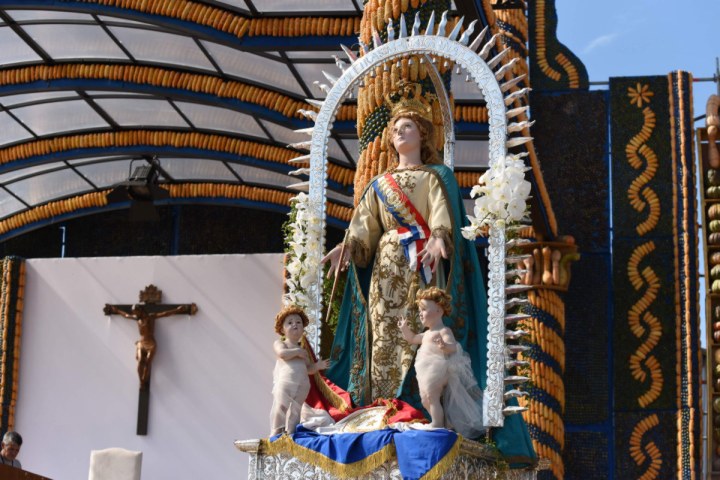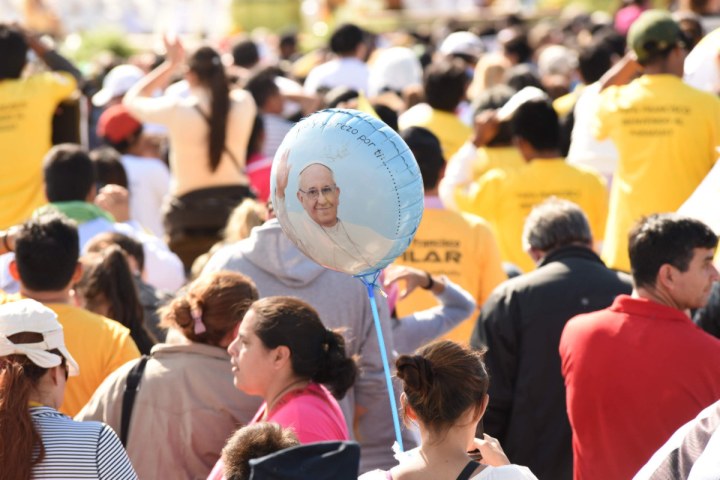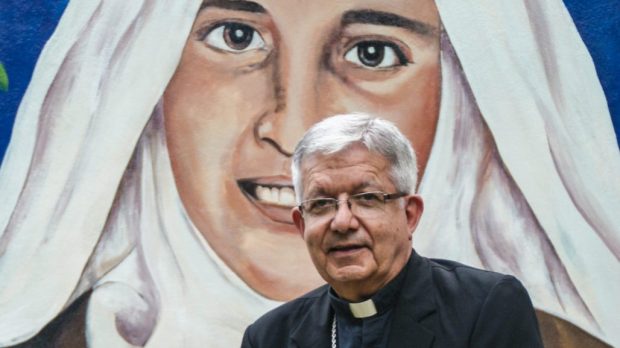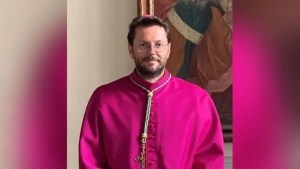On August 27, just a few months after his appointment as archbishop of Asunción on February 17, 2022, Adalberto Martínez Flores will become the first cardinal in the history of Paraguay.
His country, landlocked between Brazil, Argentina, and Bolivia, received a visit from Pope Francis in 2015.
The highly experienced 71-year-old bishop, who is currently administering his fifth diocese, is a close friend of Cardinal Seán O’Malley, the archbishop of Boston, who has accompanied his vocation since the 1970s.
Born in the Paraguayan capital in 1951, Adalberto Martínez Flores did not follow the classic minor and major seminary curriculum, but turned to the priesthood as a late vocation. After attending a vocational high school with a focus on commerce, he studied economics in the early 1970s at the National University of Asunción, and then went to Washington, D.C., to study English and philosophy.
He then became involved in the pastoral care of Latin American migrants, in connection with then-Father Seán Patrick O’Malley. O’Malley was a young Capuchin friar at the time, who had been ordained a priest in 1970 after a missionary experience on Easter Island, an isolated Chilean territory in the Pacific Ocean. The American religious, who founded the Centro Católico Hispano in 1973 when he was only 28 years old, received the help of the Paraguayan student to assist refugees and immigrants who had come to seek refuge in the U.S. federal capital, against the backdrop of the dictatorships and wars that were then affecting many countries on the continent.
Adalberto Martínez Flores then turned to the priesthood by joining the International School for Priests of the Focolare Movement in Frascati, Italy in 1977, while studying theology at the Lateran University. At the beginning of the 1980s, the seminarian was involved in the organization of several congresses on vocations in Rome and Buenos Aires.
The future Paraguayan cardinal began his priesthood under the aegis of his American friend. In 1985, Sean Patrick O’Malley became bishop of the Diocese of St. Thomas in the U.S. Virgin Islands. The young American bishop, who was only 41 years old at the time, went to Asunción on August 24, 1985, to ordain Adalberto Martínez Flores as a priest, whom he would integrate into the clergy of his island diocese. This Caribbean archipelago, with a population of approximately 100,000, has been administered by the United States since 1917, the year in which the territory was acquired from Denmark.

Return to Paraguay after the dictatorship
After nine years of parish service on Saint Croix and Saint Thomas, the Paraguayan priest left the U.S. Virgin Islands two years after Bishop O’Malley, who had become Bishop of Fall River, Massachusetts.
Thus, in 1994, Fr. Adalberto Martínez Flores returned to his native diocese of Asunción, where he became a parish priest and youth minister. He was also the secretary of the first diocesan synod organized in this landlocked country, which had just emerged from the long dictatorship of Alfredo Stroessner (1954-1989), whose Colorado party continued to control the state.
John Paul II appointed him auxiliary bishop of Asunción in 1997. He then became the first bishop of the diocese of San Lorenzo when it was founded in 2000, and in 2007 he was transferred to San Pedro, where he was involved in the development of this territory in conjunction with local businesses and associations. His predecessor in this rural and very poor diocese was Fernando Lugo, a bishop who was laicized due to a recognition of paternity, and who would become President of the Republic a year later at the head of a left-wing coalition.
It was in the presence of President Lugo — shortly before his overthrow — that Bishop Martínez Flores was installed as Bishop of the Armed Forces in 2012. In this fragile country, the army is an essential institution for guaranteeing a certain continuity of public power, and the bishop managed to ensure its service in a context of serious political instability, while three presidents succeeded one another at the head of the country. Recognized as being close to the poor, he was also involved in the area of health and social welfare as the president of the social organization San Roque González de Santa Cruz, a foundation that helps people with kidney disease, and involved in other groups.
In 2018, he became Bishop of Villarrica del Espíritu Santo, an office he combined with the presidency of the Episcopal Conference. Again facing political instability, aggravated by the economic crisis linked to the COVID-19 pandemic, he managed to make the episcopate an essential body to reestablish the link between civil society and institutions. According to the Paraguayan press, he shows an image of a Church close to the poor, attentive to the rights of peasants and indigenous people.
The contemporary history of the Church in Paraguay has been marked by serious fractures within the episcopate, most notably in 2014 during the ouster of the bishop of Ciudad del Este, Rogelio Rivieres Plano, who was called to task for the management of his seminary and for the protection given to his vicar general, a defector from the Lefebvrists, who was convicted of abuse. Today the situation is calmer and the Paraguayan episcopate has managed to show itself united in the face of the country’s political and social upheavals.

The Argentine pope’s affection for Paraguay
After his recent transfer to the diocese of Asunción, the creation of Bishop Martínez Flores as a cardinal appears to be a new sign of attention to the peripheries on the part of the Pope from Argentina, a country whose relations with Paraguay have often been bellicose.
The War of the Triple Alliance, between 1865 and 1870, was a true genocide in which almost all adult Paraguayan men were killed by a powerful coalition of Argentina, Brazil and Uruguay. No process of forgiveness and recognition was ever initiated after this war, and Paraguay’s relations with its neighbors remain marked by this deep wound.
Anti-Paraguayan racism is also deeply rooted in Argentina. Pope Francis’ choice to visit Paraguay in 2015, when he has yet to make an apostolic trip to his native Argentina, was a shocking decision for many Argentines. But the pope has often expressed his affection for Paraguay, a country on the “periphery” with which he had many contacts when he was provincial of the Jesuits in Argentina.
Centuries of waiting for the first Paraguayan cardinal
The diocese of the Paraguayan capital has waited precisely 475 years to become a cardinal’s see. In fact, the diocese of Asunción was erected in 1547 by Pope Paul III’s bull Episcopatum Paraguensis, more than 70 years before the diocese of Buenos Aires, which was not founded until 1620. The history of Christianity in these landlocked areas was marked by the adventure of the Jesuit “reductions,” community villages in which the missionaries of the Society of Jesus trained the indigenous Guaraníes in advanced techniques in crafts, agriculture, art, music, and liturgy.
In the 18th century, the political autonomy taken by these villages was in conflict with the interests of the colonial powers of the time, Spain and Portugal. The violent dissolution of the Jesuit reductions, recounted in the film The Mission, winner of the Palme d’Or at the Cannes Film Festival in 1986, has remained a central element in Paraguayan memory and in its relationship to Catholicism, long associated with European domination.
The Synod on Amazonia in 2019 helped to renew respect for the historical sensitivity of indigenous peoples and to restore the credibility of the Church as an institution that brings meaning, respect for the sacred, and the link between generations, themes that are important to indigenous peoples. It is also in the light of this evolution and of this new maturity of Latin American Catholicism that we can interpret the entry of a representative of Paraguay into the Sacred College.
Paraguay, a fragile country but a bearer of new dynamics
A surprising detail: if Cardinal-designate Adalberto Martínez Flores will be the first direct representative of Paraguay in the Sacred College, he will not be the only one. Cardinal Cristobal Lopez Romero, archbishop of Rabat in Morocco, has dual Spanish and Paraguayan nationality, having obtained a passport from the Latin American country when he was a missionary there between 1984 and 2002.
This Salesian became so rooted there that he became president of the National Conference of Religious and founded the Association of Catholic Journalists, before moving to Morocco in the 2000s. In the event of a conclave, with two nationals, there would be as many Paraguayans as Argentinians—Cardinals Poli and Sandri.
With two cardinal-electors, Paraguay has more members in the College than the more populous European countries of Belgium, Austria, Switzerland and Hungary, each of which has only one cardinal elector.
The creation of the first Paraguayan cardinal, who was himself a missionary in the United States, is another sign of the southward shift of Catholicism’s dynamic poles. The original journey of the future Cardinal Adalberto Martínez Flores shows that missionary witness is no longer lived only from the North to the South, but also from the South to the North, where migrant communities can revive Churches that are losing momentum.


